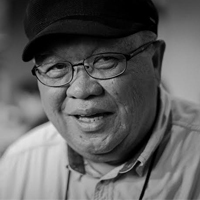

Thousands who escaped death from President Rodrigo Duterte’s anti-drug campaign considered themselves lucky until they were committed to detention centers. They never expected that the jails would be so unsanitary, congested, and unfit for humans.
The condition of our jail system clearly violates the Philippine Constitution and the United Nations Standard Minimum Rules for the Treatment of Prisoners. Without immediate solution to reduce overcrowding, a catastrophic incident can happen anytime that can cause the loss of lives.
The human threshold for suffering has limitations and it may trigger unexpected action of prisoners to protest and call attention to their plight. The detainees face inhumane punishment even before they are convicted of a crime.
“In the whole world, we have the highest congestion rate,” Bureau of Jail Management and Penology Director Serafin Barretto said in a recent media briefing.
Philippine jails currently have a congestion rate of 558%, higher than that of Haiti.
The project started when I became a volunteer photographer for retired Supreme Court associate justice Roberto Abad to document overcrowding in Metro Manila jails.
My images became the visual foundation for the Supreme Court’s ongoing efforts to accelerate the resolution of cases and sentencing, with the hope that this would reduce the congestion in prisons.
Ongoing changes are being instituted but not enough to make a dent in reducing the alarming congestion rate.

Since 2011, I have been documenting several detention centers to establish that congestion is not an isolated case.
As I have explained to all the detainees before taking their pictures: “If you allow me to photograph your situation, you will be helping yourselves. I will use the images of your condition to call attention to your plight. If changes happen when you are no longer incarcerated, those who will follow you will get the benefit of your cooperation. Those who do not like to be included please cover your face or stay out of the camera range.”
The wardens and staff of detention centers allowed me to chat and mingle with the detainees inside their cells and explain to them the purpose of my visits. In some cases, I was left alone confident that my good deed and honest purpose would protect me from harm.
I would like to make it very clear, this project was undertaken not to find fault with any groups, political parties, and penology organizations.
The problem of overcrowding has existed for decades.

To solve the problem, it will require the collective work of all branches of the government, and the participation of local governments.
While stakeholders are fully aware of the problem, some have reservations to bring out the truth because of possible retribution from higher management. I strongly believe that they are in dire need for solutions to make their job less stressful.
A better infrastructure to alleviate overcrowding is beyond their capabilities to solve. The solution requires financial appropriation, structural improvement of facilities, and integration of various stakeholders into a single agency.
There is a need to pass a law that would integrate the management of all jails under one agency to have a common standard of practice, professionalize penology management, and centralize accountability for failures and successes.
Streamlining the various agencies into a single operational body will standardize management guidelines and protocols.
We must commend efforts of everyone involved in the management of our detention centers. In spite of the obvious limitations, they have succeeded in preventing escapes, riots, and fire that could lead to death and injuries.
Rehabilitation programs are sporadic because security is their primary responsibility. In some centers, security is compromised for lack of available wardens to do other task.
Judges and lawyers play a role in the cancellation of hearings and the cancellations of scheduled hearings contribute to overcrowding because of the long wait to get another hearing date.
It is not unusual for a detainee to only have one or two hearings a year because of the backlog of cases handled by the courts.

With the Public Attorney’s Office overburdened by cases, the defense of their clients is marginalized and sometimes preparation of cases happens minutes before the hearing starts.
In the Philippines, our justice system does not guarantee to exonerate the innocent and punish the guilty all the time. For poor Filipinos, justice is a rare privilege and they suffer the most.
Unfortunately, our rule of law favors those with power, privilege and with connections.
I hope this project gives justice to those incarcerated and the warden’s difficult role as the protector of the detainee’s well being while in jail.
I never expected that I would be advocating reforms designed to help detainees and their wardens responsible for their welfare. My 6 years of work on this project made me conclude that we cannot separate their needs because both are integral parts and complimentary to the overall solution.
I sincerely hope that this body of work will engage everyone, civic leaders, lawyers and judges, elected and appointed government officials, wardens, police and military leadership, legislators of both Congress and the Senate, and advocates for Human Rights to join hands to find a solution.
This is my clarion call to solve a problem that needs immediate attention. – Rappler.com
Rick Rocamora is an award-winning documentary photograher. The photos in this article are part of his photo exhibit, "Bursting at the Seams: Philippine Detention Centers," at the second floor of the Ayala Museum from March 10 to April 6.

















